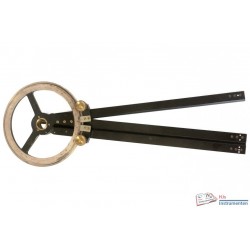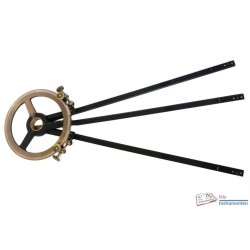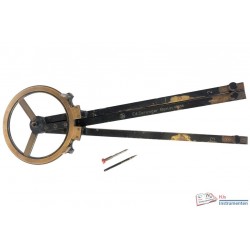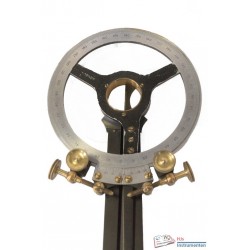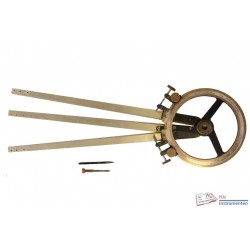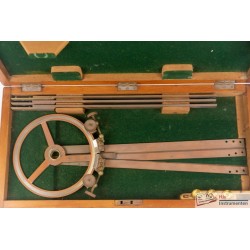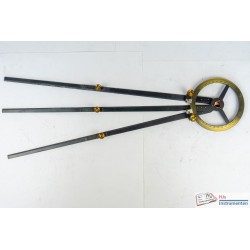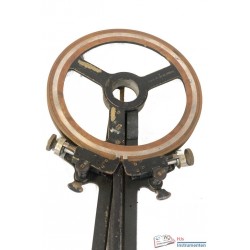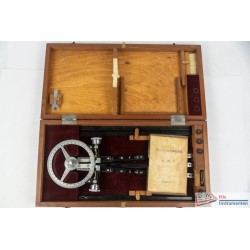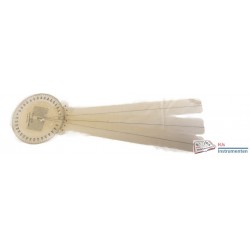Station pointer
The station pointer is a special type of protractor also called the three-legged protractor. It is used to plot two angles as derived with a sextant directly onto the chart using the three known points the angles were taken from. The station pointer is used in coastal piloting but found its main use in hydrographic surveying for plotting the observed angles.
One of the three legs is fixed, the other two can be set to the angles measured from this central leg. The left hand leg (as viewed from the sextant measurements left - middle - right) cannot indicate very small angles. If these are measured (good survey practice dicates the angles should at least be 30 degrees and preferably around 60 degrees) then the left hand leg can be brought around the circle making the middle leg effectively the left hand leg. Computing the right hand angle is now a little more difficult though.
On most station pointers the legs can be extended. For this the extensions have numbers that fit the legs. This ensures that the legs stay straight. To plot the point the station pointer has a notch in the centre or is equipped with a 'pricker' creating a small hole in the chart (which is the most accurate and therefore prefered way).

